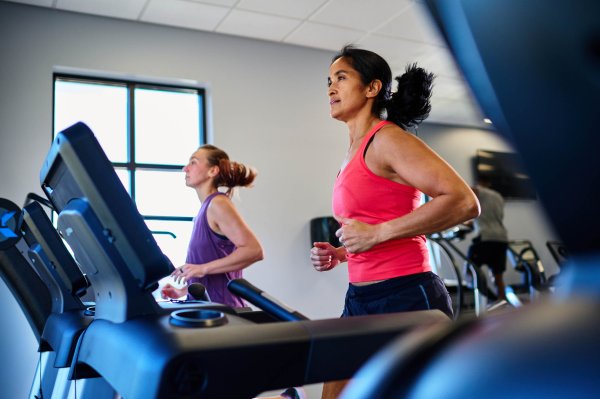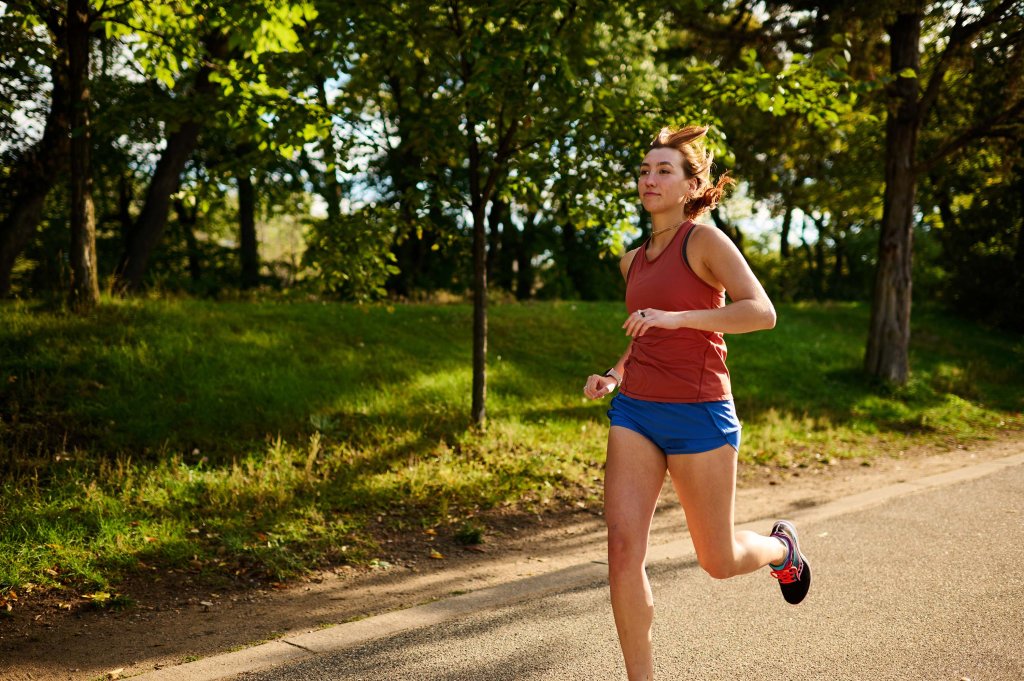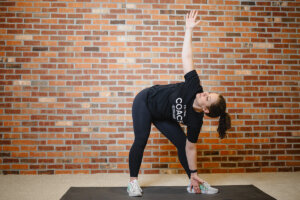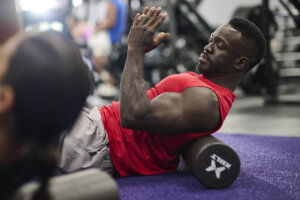Does the thought of running send shivers down your spine? Do you ever wonder how marathoners run so far for so long? Does being able to run a mile seem unimaginable? You’re not alone. Reminder: Everyone starts somewhere. Just think, even professional runners had to work up to running a mile at some point.
While it can be intimidating, running a mile is an attainable goal for most people — not to mention, it comes with a long list of benefits, from stronger muscles and bones to improved mental health and cardiovascular fitness.
Eager to incorporate running into your fitness routine? You’ve come to the right place! Here are some tips to work your way up to your first mile-long run.
A beginner’s guide to running
How do you begin running for exercise? It all starts with a good foundation: form, gear, and preparation.
Running form
Let’s start with the basics. To get the most out of your run — and prevent injury — you need to keep your form in check.
First: It’s important to keep your legs underneath you to avoid overstriding, which happens when your legs extend past your center of gravity. Essentially, it means you’re stretching your leg too far out. How do you know when you’re overstriding? Your heel will strike the ground before the rest of your foot. Leaning forward with your hips as you run will prevent overstriding, and you’ll land on the balls on your feet.
Your arms also play a big role in your running form. Keep your elbows tucked in and at a roughly 90-degree angle. The motion of your arms at this angle will drive your weight and center of gravity forward, helping you run faster. But be sure to relax your shoulders so they don’t start to ache from tension — the same goes for your jaw!
Hydration
While you’re training to run your first mile, you’re sure to work up a sweat! While you may be inclined to drink a lot of water right before a workout, steadily drinking water throughout the day keeps you better hydrated. In fact, drinking too much water at once can interfere with your body’s fluid balance and sodium levels, causing potential side effects like fatigue and headaches. But after a workout, be sure to drink water to replenish the electrolytes you lost through sweating.
Stretching
Whatever you do, don’t forget to stretch! Running is a high-impact exercise, which means running without preparing your muscles can cause swelling, sprains, cramps, or even fractures. Stretching before and after you go running will make the muscles in your body more flexible and prevent injury. You should also take 5-10 minutes before each run to do a light warm-up or cooldown activity.
For stretches to try before your next run, check out our guide to preparing for a workout.
If you’re experiencing any pain while stretching, have a doctor check it out. Be sure to look out for and nurse any common running injuries, including:
Pushing yourself while you have an injury will likely worsen its condition, so listen to your doctor’s advice.
Running shoes and gear
Next: What gear do you need for running?
Of course, a good pair of shoes is key. Running shoes will support your legs and knees when your foot hits the ground. What kind of shoes should you wear? That depends on your feet, running form, and the terrain you’re running on. A supportive shoe will absorb some of the impact from running, reducing the chance of injury.
Another good tool for running is an activity tracker. Aside from monitoring your progress, tracking runs can help boost your motivation! Try an app like Strava or MapMyRun, which monitor distance, pace, and total time spent running. Some apps even offer training plans or allow you to share progress with friends. (There’s nothing wrong with a little humble brag.) But if you’re not into the bulkiness of a phone, smartwatches offer some of the same activity-tracking abilities.
Running your first mile
Now you’ve done the prep work, so let’s get down to business! How can you complete your first one-mile run?

How fast should a beginner run a mile?
While you’re training, remember to take things slow. As the saying goes: An AF gym isn’t built in a day (that’s the saying, right?). It’ll take time to prepare for your first mile run.
How often should you run?
New runners shouldn’t run every day. Rest days — days with no exercise at all — will help your body adjust to the strain of frequent running.
Recovery days with light and easy exercise encourage circulation and blood flow after days of intense physical activity, replenishing muscle nutrients and removing waste. Some days, you can choose to do strength training or swimming as a substitute for running. Alternating between on and off days will also help you avoid injuries and burnout.
To start off, try one or two 1-mile jogs or three run-walks per week.
How quickly should a beginner be able to accomplish running a mile?
While hitting a certain mile time is a great long-term goal, start by setting goals relative to how far you can run continuously. When you’re running for the first time, you will likely need to take some time to walk. Running a mile requires stamina that builds up over time with hard work.
Certain exercises will build your endurance and help you run farther (think: squats, lunges, and deadlifts with weights.) For example, weight training builds core strength and reduces the risk of injury. Weekly speed workouts, such as sprint interval training, also support strong muscles and joints.
You can eventually work your way up to a full mile without stopping or walking. Challenge yourself by running for timed intervals with a set amount of time to walk in between. Listen to your body, breathing, and heart rate to find a steady pace while running. Maintaining a consistent pace will help you steadily spend energy throughout the run, rather than burning out at the beginning. With that pace set, you’re ready to take on the full mile.
Just like that, you’ve done it! After completing your first mile, you can kick things up a notch. Set goal times and challenge yourself to gradually go faster, longer, or farther than you have before!
We said it once, and we’ll say it again: Don’t skip your post-run cooldown! Check out this cooldown routine for a smooth recovery.



